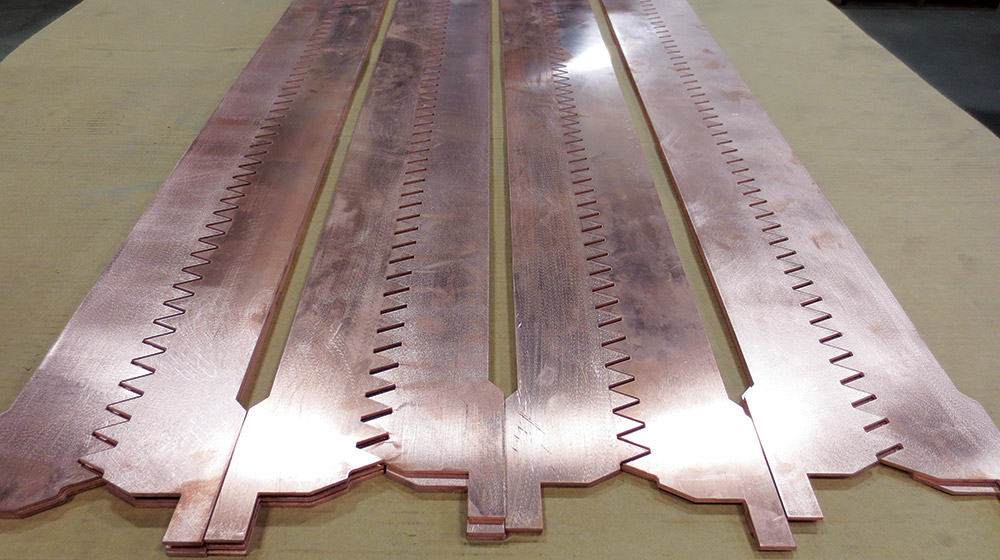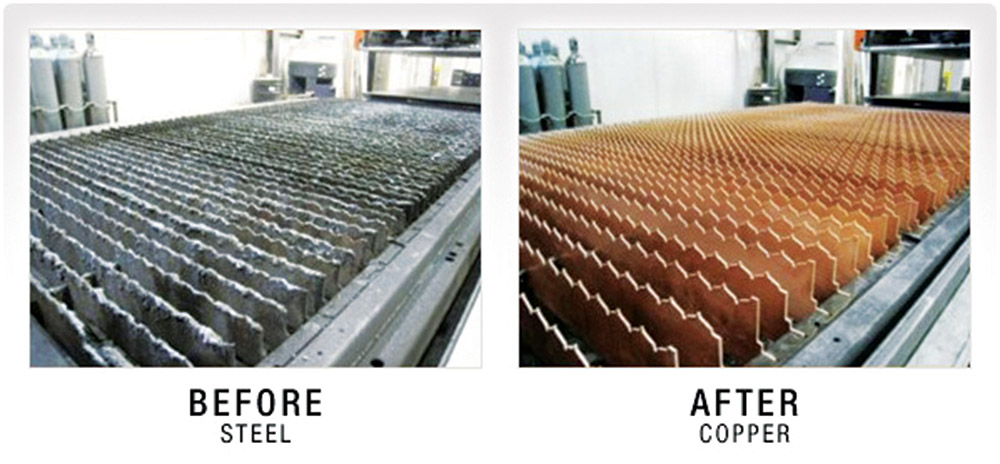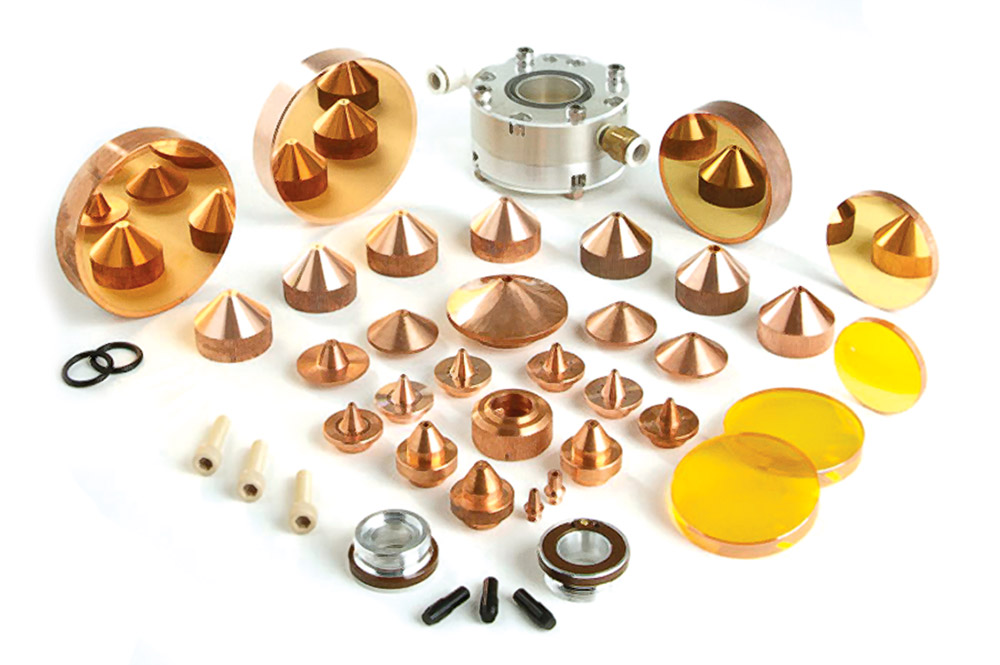November 2016 - For most manufacturers, the mantra “do more with less” is shorthand for finding ways to achieve higher performance results while reducing operation costs. Fiber lasers have stepped up to the challenge with their ability to cut, weld, drill and mark. Adoption of fiber for material processing applications has risen dramatically. But according to MC Machinery Inc.’s Regional Sales Manager Bernardo Olguin the last two years have seen another major trend emerge—the demand for laser equipment that can use fewer consumables.
The Wood Dale, Illinois, company is part of Mitsubishi Corp. MC Machinery produces metalworking equipment that spans everything from simple fabrication applications to CNC-driven, automated manufacturing cells. The OEM’s NX-F fiber laser series features an advanced beam and a preset autofocus processing head for fast, accurate production. Processing time is reduced by up to 50 percent when compared to a CO2.
Fiber lasers outsold CO2 machines in 2015, but Olguin affirms that, “our CO2 lasers remain competitive with fiber because of developments in our resonator that produce a high-quality beam, resulting in a 40 percent speed gain in thick plate but carries low operation costs.” Surface finish quality in stainless is improved by up to 80 percent over conventional laser processes.

Keeping it clean
Olguin notes that innovations are also carving out savings by extending the life of certain consumables. For example, take the optics in the company’s CO2 resonator. “It’s called clean optics,” he explains. “Optic life is between 8 and 10,000 hours versus our first generation optic which had a life of 2,000 hours. Based on the machine and kilowatts, optic life is significantly extended.” The Mitsubishi cross-flow CO2 resonator has also been designed to eliminate the need for turbine blowers or glassware. Expensive rebuilds are no longer necessary which also lowers the cost of ownership.
MC Machinery’s fiber and CO2 lasers are outfitted with a low absorption lens. A special coating extends lens life 1½ to 2½ times beyond that of a standard Zinc Selenide lens. ZnSe offers the lowest absorption of common materials and is the preferred choice for high-power applications. High pressure assist gases are used to increase cutting speeds and require extra thick lenses to prevent distortion or breakage.

“The benefits of this are, as the laser passes through the focusing lens a percentage of the beam is absorbed into the lens substrate,” says Olguin. “You get an absorption rate of 0.2 percent with a standard lens. An ultra-low absorption lens offers an absorption rate of 0.13 percent. The coating is the difference between the two.”
MC Machinery’s low absorption CO2 lens provides higher focus stability and is easier to clean due to its tough top layer. The lens also slows thermal breakdown and increases product life 11/5 to 2 times longer than conventional consumables.
While MC Machinery is making inroads with advances in its fiber lasers and consumables, it continues to tweak tolerances for its CO2 models to meet different specifications. “As an OEM, we’re always improving tolerances and specifications to gain better edge quality and faster cutting speeds on less desirable material.”
Pushing performance
Earlier this year, the OEM introduced its eX-F fiber with an all-in-one Zoom cutting head. The Zoom Head has an auto focus range of 3.75 in. to 10 in. which allows the operator to process sheet thicknesses up to 1 in. thick mild steel with no setup. MC Machinery also released its SR Series CO2 this year. The machine features a 60 percent shorter gas change time compared to previous models.
The OEM’s one-piece nozzles are available in both its CO2 and fiber lasers. “Our nozzles are made to factory spec to ensure longevity and consistent cutting across a wide range of products,” says Olguin.

With an eye toward structural improvements, MC Machinery offers the option to install copper slats versus conventional steel slats on its fiber and CO2 machines. Copper lasts four to eight times longer and is easier to clean.
“When an operator is cutting parts, some of the dross is going to adhere to the slats, especially if you are cutting material that is ¼ in. and thicker,” says Olguin. “Dross sticks to mild steel slats, almost as if it’s welded on. It’s very hard to clean and it can sometimes mean that a slat has to be replaced. We offer copper which is a little more costly upfront but low maintenance and easy cleaning give customers a return on investment pretty quickly. There is also less carbon contamination on the bottom sides of the parts you are cutting. Machine uptime previously lost to maintenance is recouped.”
In another cost conscious measure, MC Machinery’s Encore program [established in 2003] offers an alternative for cutting equipment. “There are a lot of customers that can’t invest in a new machine initially,” says Olguin. The OEM ensures its used products are refurbished to factory quality standards, certifies each unit and provides a warranty.
Whether it’s used equipment under the OEM’s Encore program, or its newest machines, MC Machinery continues to support improvement of consumables for both. “At the end of the day fewer consumables means less maintenance and lower operating costs,” says Olguin. “The biggest benefit is the reduction of downtime. Our customers want maximum beam-on time on their machines.”
MC Machinery Systems Inc.
Wood Dale, Illinois
630/860-4210

